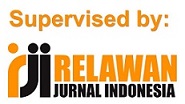PERBANDINGAN METODE REGRESI SPATIAL AUTOREGRESSIVE MODEL DAN SPATIAL ERROR MODEL UNTUK KEJADIAN DIARE DI PROVINSI BALI
Abstract
To control the growth rate of diarrheal cases, one of the steps that can be taken is to analyze factors related to diarrhea and their potential to contribute to an increase in diarrhea cases from a regional perspective. Understanding the influence of regions or geographic factors in modeling is known as spatial modeling. It has been identified that there are two common variants of spatial models often used, which include the Spatial Autoregressive Model (SAR) and the Spatial Error Model (SEM). The objective of this research is to determine the best model for the incidence of diarrhea in the Bali region by applying spatial analysis methods such as SAR and SEM. The research results indicate that the data used in the analysis contain significant spatial elements, highlighting the importance of integrating spatial aspects into modeling. In this context, the SEM method has proven to be the most suitable model when compared to Ordinary Least Squares (OLS) and SAR. The R-squared value for the SEM model is 96.01%, and it achieves the lowest AIC value of 267.558. Therefore, these findings demonstrate that the SEM model is more accurate in explaining the relationships among the variables involved in this study.
Keywords
Full Text:
PDF (Bahasa Indonesia)References
Anselin, L. (1988). Spatial Econometrics: Methods and Models. Netherlands: Kluwer Academic Publishers.
BPS. (2020). Sirusa Badan Pusat Statistik Republik Indonesia. Retrieved from Badan Pusat Statistik Republik Indonesia: http://sirusa.bps.go.id
Burnham, K., & Anderson, D. (2002). Model Selection and Multimodel Inference: a Practical Information-Theoretic Approach. New York: Springer-Verlag.
Dinas Kesehatan Provinsi Bali. (2021). Profil Kesehatan Provinsi Bali Tahun 2020. Bali, Dinas Kesehatan Provinsi Bali.
Grasa, A.A. (1989). Econometric Model Selection: A New Approach. Kluwer. Jurnal Informatika Mulawarman, Vol. 4(3).
Le-Sage, J.P. (1999). The Theory and Practice of Spatial Econometrics, Toledo:
Department of Economics University of Toledo.
Mardhatillah, M. (2020). Faktor-Faktor yang Mempengaruhi Kasus Penyakit Diare di Provinsi Sumatera Barat Menggunakan Analisis Regresi Spasial. Skripsi (tidak diterbitkan). Padang: Universitas Negeri Padang.
Pratiwi, L.P.S., Hendayanti, N.P.N., dan Suniantara, I.K.P. (2020). Perbandingan Pembobotan Seemingly Unrelated Regression–Spatial Durbin Model untuk Faktor Kemiskinandan Pengangguran, Jurnal Varian, Vol. 3(2): 51-64.
Rahmawati, D. dan Bimanto, H. (2021). Perbandingan Spatial Autoregressive Model dan Spatial Error Model dalam Pemodelan Indeks Pembangunan Manusia di Provinsi Jawa Timur. Jurnal Statistika dan Aplikasinya. Vol. 5(1), June 2021.
Sulasih, I.G.A.D., Susilawati, M., dan Suciptawati, N.L.P. (2021). Pemodelan Kasus Diare Di Provinsi Bali Dengan Metode Analisis Regresi Spasial, E-Jurnal Matematika Vol. 10(2): pp. 95-102
DOI: https://doi.org/10.30743/mes.v9i1.8099
Refbacks
- There are currently no refbacks.

.png)

